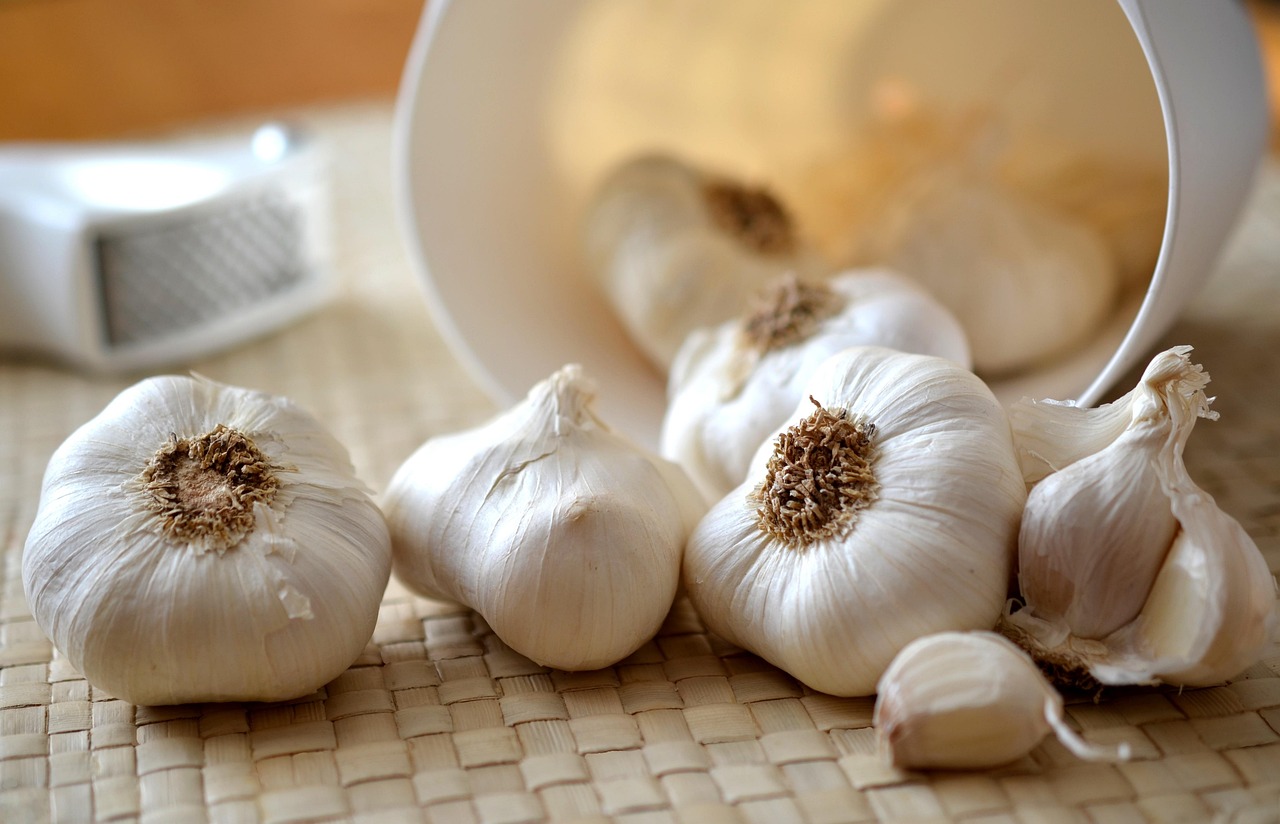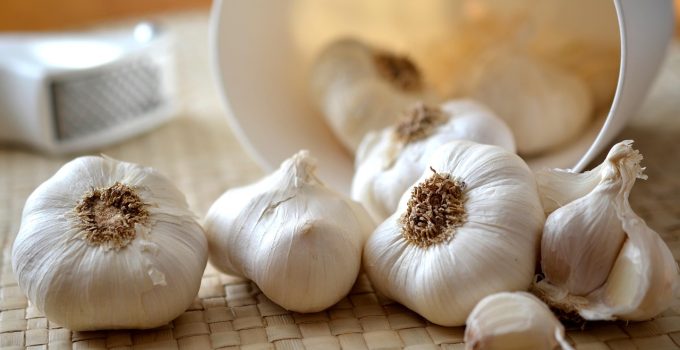6 Incredible Benefits of Feeding Garlic, Turmeric, and Moringa to Your Poultry Birds
If you’re running a small or medium poultry farm, you already know that healthier birds mean fewer drugs use, vet bills, and fast weight gain, happier customers.
Garlic, turmeric and moringa are three cheap, natural plants you can use on your farm to boost bird health, performance and farm profits.
Below I’ll walk you through six real benefits these plants can bring to your poultry enterprise.
And how to use them practically, simple recipes, and a few sensible cautions so you can start experimenting safely and with confidence.
Why these three Garlic, Turmeric, and Moringa?
Garlic, turmeric and moringa have long been used in traditional animal husbandry. Each brings something different to the table: garlic is known for supporting immunity and gut health.
Turmeric for its anti-inflammatory and antioxidant effects, and moringa for dense nutrition and growth support.
Together they form a low-cost, natural toolkit that complements good husbandry, not a replacement for biosecurity, clean water, proper feed and veterinary care.

Recommended for you:
Discover 7 Proven Strategies to Defeat Farm Fatigue Today
7 Key Benefits of Charcoal to Poultry Farming
The Feed Battle Every Farmer Faces: 7 Hidden Truths about Factory-Made vs. Home-Made Poultry Feed
-
Benefits of Feeding Garlic, Turmeric, and Moringa it provides Stronger immunity and fewer sick days for your Birds
Sick birds slow production and eat into your profits. Garlic contains compounds (like allicin) that are traditionally associated with immune support.
Turmeric contains curcumin, an antioxidant and anti-inflammatory compound that helps birds cope with stress and infection.
Moringa on the other hand is packed with vitamins A, C and minerals that support immune function.
Practical tip: add a small amount of crushed fresh garlic or garlic powder to feed or water (see recipes below) during high-risk periods, just after vaccination, during wet seasons, or when you notice more coughing/sniffles in the flock.
Use moringa leaf meal regularly as a feed supplement for steady nutritional support.
-
-
Benefits Of Feeding Garlic, Turmeric, And Moringa, They Are Known To Provide Better Gut Health And Digestion
-
A healthy gut means better feed conversion and faster growth. Garlic has been used as a natural gut modulator — it may help balance gut microbes and reduce harmful bacteria. Moringa leaves are fibrous and contain prebiotic components that support gut function and nutrient absorption. Turmeric contributes by reducing gut inflammation when birds face stress or minor infections.

-
Benefits of Feeding Garlic, Turmeric, and Moringa Improved growth and feed conversion
Small improvements in feed conversion add up fast. Moringa is especially useful here it’s dense in protein, amino acids, vitamins and minerals, so birds fed moringa often show better weight gains on the same amount of feed.
By supporting gut health and lowering inflammation, garlic and turmeric indirectly help birds convert feed into muscle more efficiently.
Practical tip: for growers aiming to finish broilers faster, try including moringa leaf meal at 2–6% of the diet and monitor weight gain against a control group.
Even small improvements (2–5%) in FCR (feed conversion ratio) increase your margins.
Recommended for you:
Understanding the Cause of Poultry Diseases and What to Do If Your Chickens Are Sick
Poultry Diseases That Affect Humans, And How to Protect Yourself against Them.
-
Garlic, Turmeric, And Moringa Are A Natural Antioxidant And Stress Relief
Heat, vaccination, transport, predators, and overcrowding all cause stress, and stressed birds eat less and grow more slowly.
Turmeric and moringa provide antioxidants that help birds handle oxidative stress. Garlic’s compounds also offer antioxidant support.
This is especially valuable in hot climates or during management changes.
Include turmeric powder sparingly during vaccination weeks or before/after transport events. Offer moringa regularly for day-to-day antioxidant support.
-
Garlic, Turmeric, And Moringa Are Safer, More Natural Disease Management (Reducing Reliance On Antibiotics for Poultry birds)
Many farmers want to cut antibiotic use because of cost, withdrawal periods, and market demand for antibiotic-free products.
While garlic, turmeric and moringa are not miracle drugs, they can reduce the frequency and severity of some minor infections when used alongside good management.
They help the birds’ own defenses work better so you rely less on routine antibiotics.
Some helpful tip: use these plants as part of an integrated health plan, maintain strict biosecurity, vaccinate on schedule, keep litter dry, and use garlic/turmeric/moringa as supportive measures rather than sole treatments for disease. When serious disease occurs, always contact a vet doctor.

Recommended for you:
7 Reasons Why its Important Farming Your Maize to Feed Your Poultry Birds
7 Reasons Why You Should Use Commercially Formulated Poultry Feeds
Why I’m Excited about My Next Batch of Poultry birds
-
Garlic, Turmeric, and Moringa, help in Lowering feed costs and add extra income opportunities
Moringa can be grown on the farm and dried to make leaf meal, that means cheaper, nutritious protein without buying as much commercial feed.
Garlic and turmeric are often inexpensive locally; small additions to feed are usually far cheaper than vitamin premixes or special additives.
Plus, marketing your birds as raised with natural supplements can let you command better prices in local markets.
Helpful tips: grow moringa trees around your farm fence or intercropped with other crops, they’re fast-growing and keep giving leaves for months. Dry and store leaves for use throughout the year.
How to use them: simple, farmer-friendly methods
- Moringa leaf meal (recommended continuous use)
- Harvest young moringa leaves, air-dry or shade-dry them until crisp (avoid sunburned leaves), then grind into meal.
- Inclusion: start with 3% of the feed for layers and growers; you can experiment up to 6–10% for broilers but monitor palatability and growth.
- Too much can reduce feed intake because of fiber.
- Benefits: nutrient boost, sustained performance, cheap if you grow it.
- Garlic (good for short courses / preventive boosts)
- Fresh garlic: crush 1–2 cloves per 12 birds and mix into a small amount of feed as a treat not daily long term.
- Powdered garlic: 0.5–1.0% of feed is a common low-risk range; or add to drinking water as a tincture (crushed garlic steeped in warm water, strained) for short weeks.
- Use during high-risk times (post-vaccine, cold snaps, wet season).
- Turmeric (anti-inflammatory and antioxidant)
- Turmeric powder: add 0.5–1% of feed (small amounts are effective). For drinking water, a pinch per liter can be used for short courses.
- Alternate weeks of use with garlic or moringa to avoid overuse and palatability issues.
Recommended for you:
Noiler Farming In Nigeria, the New Game Changer
5 Shocking Ways Your Poultry Birds Spread Farm-Wrecking Diseases
Reducing Antibiotic Use in broilers: Natural Ways to Keep Your Birds Healthy.
Simple on-farm recipes
- Moringa feed mix (starter supplement for growers)
- 96 kg commercial feed + 3–4 kg moringa leaf meal → mix well and feed as usual.
- Garlic tonic (short course)
- Crush 10 cloves of garlic, steep in 2 liters of warm water for 2–3 hours, strain. Add 100–200 ml of tonic to 20 liters of drinking water for 2–3 days during stress events. (Use only short courses.)
- Turmeric sprinkle
- Mix 50 g turmeric powder into 10 kg of feed and feed for a week after vaccination or during heat stress.
Safety and cautions practical and important
- Start small and observe. Birds differ by species and strain. Test on a small group first and watch for reduced feed intake or altered egg taste (garlic can slightly affect egg flavor if used heavily in layers).
- Avoid overdosing. Bigger is not always better. High levels of garlic or turmeric can reduce palatability and cause waste.
- Not a replacement for a vet. If you see disease outbreaks, seek veterinary diagnosis and treatment. These plants are supportive, not curative.
- Egg withdrawal and markets. If you plan to sell to strict buyers, check their rules, some buyers ask for no herbal additives or have quality checks. Communicate what you use.
- Quality matters. Use clean, dry moringa leaves to avoid mould; store powders in dry, cool places.
Monitoring and recordkeeping how to know it’s working
Keep simple records: bird mortality, weekly weight gains, feed consumed per house, egg production per week, and when you added supplements.
After 4–6 weeks you should see trends: steady weights, fewer sick days, or reduced medication costs.
If you don’t see improvements, adjust doses or stop one plant at a time to isolate effects.
Conclusion
Start small, scale-up when it works
Garlic, turmeric and moringa are low-cost, farm-friendly tools that, when used sensibly, help poultry birds to be healthier, grow better and reduce some costs.
For small/medium farmers the beauty lies in on-farm production (especially moringa), easy preparation, and the chance to market birds as raised with natural support.
Start with small trials, keep good records, and combine these herbs with solid husbandry: clean water, balanced feed, dry litter, regular vaccination, and good bio-security.







